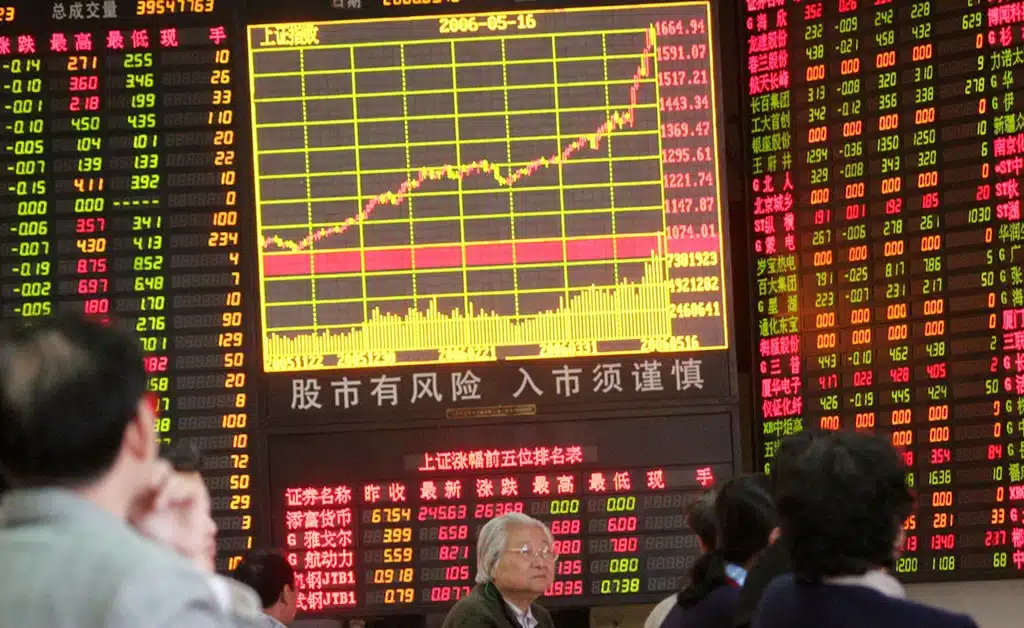Global Billion-Dollar Firms 2025: Who’s Leading and Who’s Catching Up?
In 2025, the global economic landscape is defined by the rise of billion-dollar firms, with the U.S. maintaining its dominance while emerging markets like India and the broader Asia-Pacific region gain significant ground.
This article examines the distribution of publicly listed companies by country, analysing the factors driving their growth and highlighting key trends that shape the global economy.
The Global Picture: 5,522 Billion-Dollar Firms
As of 2025, there are 5,522 publicly listed firms valued at $1 billion (SGD1.29 billion) or more globally, collectively representing a staggering market capitalisation.
These companies are spread across various regions, but their concentration varies significantly by country and economic context.
![]()
Key Takeaways
- The U.S. leads the pack with 1,873 billion-dollar firms, accounting for over a third of the global total.
- Japan ranks second with 404 firms, followed by India at 348 firms.
- The Asia-Pacific region collectively holds 30% of the global share, second only to North America.
- In contrast, Latin America and Africa have the smallest shares, at 3% and 1%, respectively.
This uneven distribution underscores the role of economic growth, capital inflows, technological advancements, and policy reforms in fostering billion-dollar firms.
![]()
The U.S.: A Powerhouse of Billion-Dollar Companies
The United States dominates the list with 1,873 billion-dollar firms, representing nearly 49% of the global market share by market capitalization.
Why the U.S. Leads
- Technological Progress: Silicon Valley remains a global hub for innovation, producing tech giants that dominate global markets.
- Venture Capital Ecosystem: The U.S. boasts the world’s most robust venture capital network, fueling startups and enabling them to scale rapidly.
- Economic Competitiveness: A business-friendly environment, strong intellectual property protections, and access to deep capital markets attract entrepreneurs and investors alike.
Per Capita Analysis
The U.S. has approximately five billion-dollar companies per million residents, reflecting its unparalleled ability to nurture large-scale enterprises across industries.

Japan: A Legacy of Reform and Resilience
Japan ranks second globally, with 404 billion-dollar firms, despite facing demographic challenges such as an aging population and shrinking workforce.
Drivers of Success
- Abenomics: Under former Prime Minister Shinzo Abe, Japan implemented sweeping stock market reforms, including measures to boost foreign investment and corporate governance.
- Tokyo Stock Exchange Initiatives: Companies are now required to outline strategies for increasing valuations, addressing concerns about undervaluation in Japanese markets.
- Corporate Consolidation: Increased merger and acquisition activity has strengthened the competitiveness of Japanese firms on the global stage.
While Japan’s growth may not match the explosive pace of emerging markets, its legacy of industrial strength and recent reforms ensure its continued prominence.

India: Explosive Growth Amid Rising Participation
India has emerged as a powerhouse, ranking third globally with 348 billion-dollar firms, a remarkable increase from just 20 firms in 2000.
Factors Behind the Surge
- Rising Investor Participation: A growing middle class and increased retail investor activity have fueled demand for Indian equities.
- Infrastructure Investment: Government initiatives, such as the National Infrastructure Pipeline, have spurred growth in key sectors.
- Stock Market Performance: Over the past five years, India’s leading stock market index surged 137%, outpacing the S&P 500’s 98% gain.
India’s favourable demographics, which is a young and rapidly urbanising population, position it as a future leader in global markets.

China: A Strategic Player in the Global Economy
China ranks sixth globally, with 216 billion-dollar firms, reflecting its strategic focus on state-led investments and technological advancement.
Key Insights
- Government Support: State-backed initiatives have prioritized sectors like technology, renewable energy, and manufacturing.
- Asia-Pacific Leadership: Despite its lower rank compared to India, China remains a cornerstone of the Asia-Pacific region, which collectively accounts for 30% of global billion-dollar firms.
- Challenges: Geopolitical tensions and regulatory crackdowns have tempered investor confidence in recent years, impacting growth trajectories.
China’s ability to leverage its vast domestic market and manufacturing capabilities ensures its continued relevance in the global economy.
Europe: A Diverse Landscape
European countries like the UK, Germany, France, and Switzerland also feature prominently in the rankings:
- UK: 218 firms, benefiting from London’s status as a global financial hub.
- Germany: 143 firms, driven by its strong industrial base and export-oriented economy.
- France: 131 firms, supported by its diverse economy and luxury goods sector.
- Switzerland: 122 firms, leveraging its reputation for financial services and pharmaceuticals.
Europe’s diversity in industries and economies highlights its resilience amid global uncertainties.
Emerging Markets: The Next Frontier
Emerging markets, particularly in the Asia-Pacific region, are catching up rapidly:
- India’s Rise: As noted earlier, India’s explosive growth reflects its potential to rival established players like Japan and China.
- Broader Asia-Pacific Growth: Countries like Australia (143 firms) and others contribute to the region’s 30% global share.
- Challenges in Latin America and Africa: These regions lag behind, with Latin America holding 3% and Africa just 1% of the global billion-dollar firms. Limited infrastructure, political instability, and smaller capital markets hinder their progress.
In a Nutshell
The global distribution of billion-dollar firms in 2025 paints a picture of both continuity and change. While the U.S. remains the undisputed leader, emerging markets like India and the broader Asia-Pacific region are rapidly gaining ground.
Key trends shaping this landscape include:
- Strong economic growth and rising capital inflows in Asia.
- Technological innovation and venture capital ecosystems in the U.S.
- Stock market reforms and corporate consolidation in Japan.
- Favourable demographics and infrastructure investment in India.
As the global economy evolves, the balance of power among billion-dollar firms will continue to shift, with emerging markets playing an increasingly critical role.
Who will lead the next wave of global economic growth? The answer lies in the dynamic interplay of innovation, policy, and opportunity.
Let us know what you think about this topic, and what do you want to hear next.
Sources
- BestBrokers Analysis – Billion Dollar Companies by Country in 2025.
- Tokyo Stock Exchange Reforms – Corporate Valuation Initiatives.
- India’s Stock Market Surge – Leading Index Performance Data.
- U.S. Venture Capital Ecosystem – Innovation and Scaling Trends.
You can now be our community contributor and make a pitch to have your favourite personality be on our show.
Join our community group and drop us your insights on this topic.

-Jun-01-2025-06-24-42-9139-PM.png?width=50&name=Square%20(2)-Jun-01-2025-06-24-42-9139-PM.png)




.png?height=200&name=WnS%20146%20(2).png)



.jpg?height=200&name=images%20(6).jpg)
Let us know what you think of this post